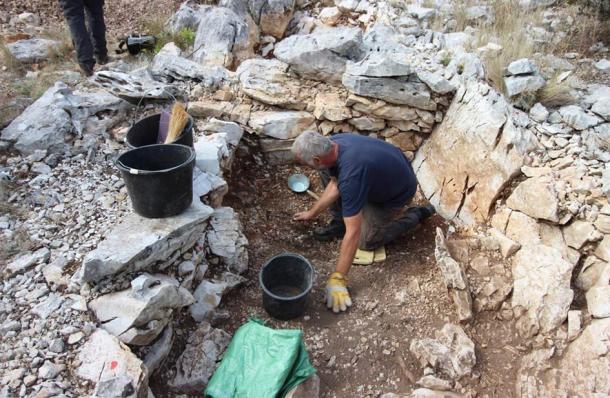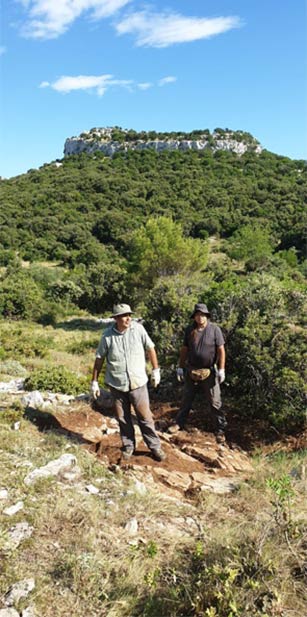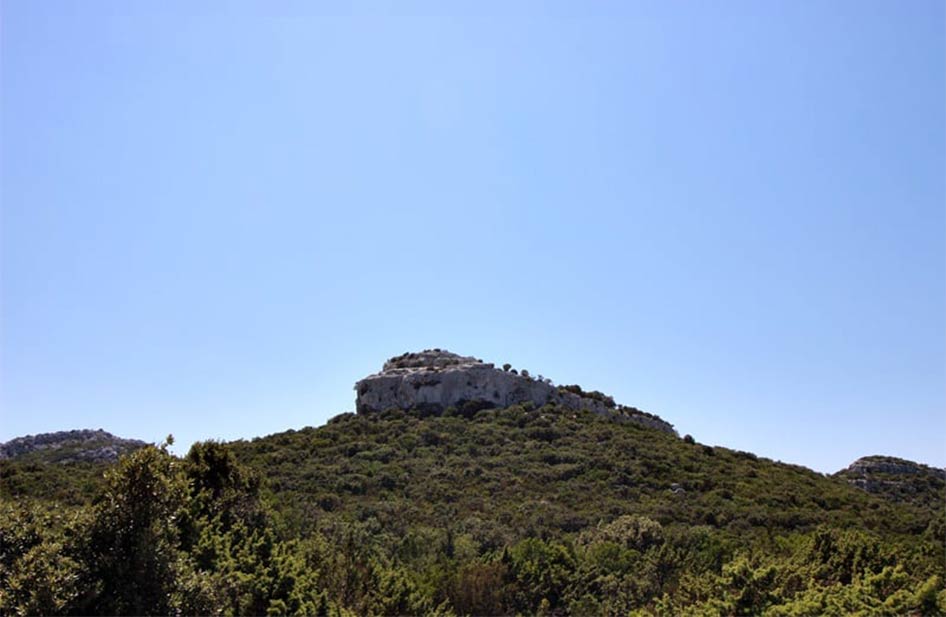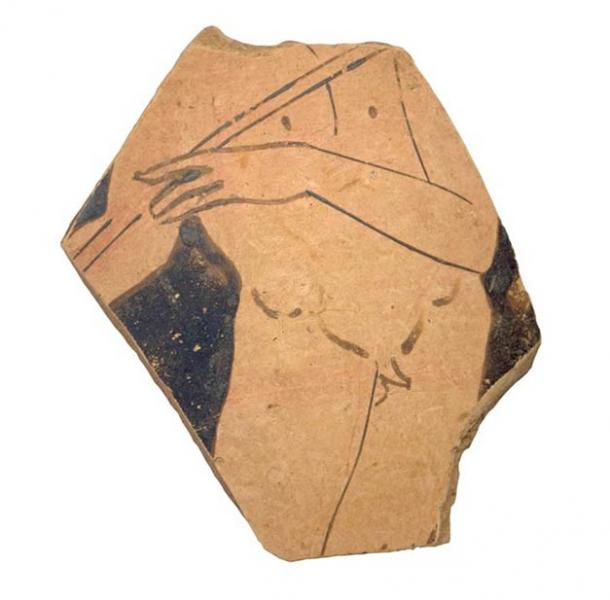Archaeologists exploring in an ancient burial cave in Croatia have discovered a warrior’s grave containing an exceptionally rare Greek-Illyrian type bronze war helmet. The open-faced, bronze, Greek- Illyrian helmet originated in Peloponnese, ancient Greece, and was developed during the 8th and 7th centuries BC. Now, archaeologists have unearthed one of these rare helmets in Zakotarac, on the Pelješac peninsula, in southern Dalmatia, Croatia, in the cave tomb of a 4th century BC warrior.

The rare find of a Greek-Illyrian helmet was discovered within a rock-cut tomb in Croatia. ( Dubrovnik Museums )
Exploring the Cave of Ancient Treasures
The Illyrian type helmet was used by ancient Greek Etruscans and Scythians and it later became popular with the Illyrians. A variety of the helmet was also developed in Italy based on its appearance on ivory reliefs. It then became obsolete in most parts of Greece in the early 5th century BC and its widespread use in Illyria ended by the 4th century BC.
Apart from the Greek-Illyrian helmet, the researchers who explored the ancient grave in Croatia also discovered a hoard of iron weapons including spears and knives. At least two more persons were buried in the same grave, including a woman wearing bronze bracelet. According to an article in Archaeology News Network , among the other artifacts discovered in the grave were “fifteen bronze and silver fibulae (clasps), 12 needles, several spiral bronze ornaments and tweezers and several hundred glass paste and amber beads belonging to necklaces.”


On the left: Archaeologists at work at the location of the excavation site on the Pelješac peninsula, in southern Dalmatia, Croatia. On the right: Gradina hilltop town in Nakovana, where the archaeologists have identified many other hitherto unknown sites. ( Dubrovnik Museums )
The Stalagmite of the Afterlife
The ancient grave was excavated during the restoration of a damaged burial mound. The large rectangular space measured approximately 3 x 2 meters (9.84 x 6.56 ft.). The warrior’s skeleton was laid in a west-east direction in the tomb but his bones were found in a “rather poor condition,” according to the researchers. The tomb dates somewhat earlier than the colony on Korčula, that was founded in the late 4th or early 3rd century BC, explains the project coordinator, Dr. Hrvoje Potrebica from the Department of Archaeology of Zagredb University .
The circumstances leading to this incredible discovery began in 2019 when a team from the Center for Prehistoric Research visited western Peljesac and identified potential archaeological digs at the Illyrian Cave Sanctuary at Nakovana, dating to the 4th to 1st centuries BC, in which grave goods were found deposited around a phallic shaped stalagmite. Professor Potrebica says the fourth century BC Greek-Illyrian helmet “is exceptionally rare” and belongs to a collection of only about forty that have ever been found in Europe.

Fragment of a vase of Greek origin found in the grave where the Greek-Illyrian helmet was discovered. ( Dubrovnik Museums )
Gathering Day-to-Day Stuff for the Afterlife
Also of significant rarity in the grave the researchers discovered “thirty vases” that were mostly of Greek origin, although they came to the site from Attic and Italian workshops. The researchers say these were among the most expensive vases at that time. In addition to the treasures discovered inside the cave, the archaeologist also identified many other hitherto unknown sites in Nakovana, highlighted Professor Potrebica. The researchers also explored another group of prehistoric mounds around the village of Zakotorac. Following a prehistoric road they ended up at another site known as “the Vidohovo spring.” At this ancient site the researchers suspect their will find “another shrine.”
Dr. Potrebica thinks the cave burial site where the tomb was discovered still has “enormous potential.” Next year, when the current coronavirus restrictions lift, the researchers will hopefully have the opportunity to further explore the site which they believe will further illustrate these discoveries in a broader context. Furthermore, Dr. Potrebica says the discovery of the Greek- Illyrian type bronze war helmet, that was popular in Greece from the Greco-Persian Wars, coupled with further “exceptional finds on Korcula,” are presenting archaeologists with a new picture “of the importance of the southern Adriatic in the historical dynamics of this part of Europe.”
Top image: While excavating an ancient burial cave in Croatia, archaeologists have discovered a rare Greek-Illyrian helmet in an ancient warrior’s grave. Source: Dubrovnik Museums
By Ashley Cowie
 RSS Feed
RSS Feed













 December 7th, 2020
December 7th, 2020  Awake Goy
Awake Goy  Posted in
Posted in  Tags:
Tags: 
















